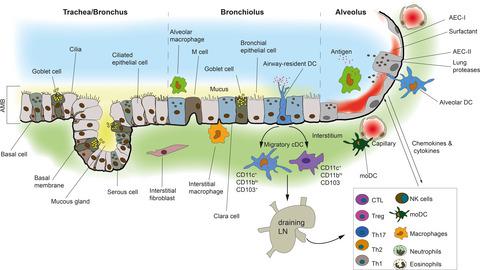当前位置:
X-MOL 学术
›
Clin. Transl. Immunol.
›
论文详情
Our official English website, www.x-mol.net, welcomes your feedback! (Note: you will need to create a separate account there.)
What lies beneath the airway mucosal barrier? Throwing the spotlight on antigen-presenting cell function in the lower respiratory tract.
Clinical & Translational Immunology ( IF 5.8 ) Pub Date : 2020-07-23 , DOI: 10.1002/cti2.1158 Saparna Pai 1 , Visai Muruganandah 1 , Andreas Kupz 1
Clinical & Translational Immunology ( IF 5.8 ) Pub Date : 2020-07-23 , DOI: 10.1002/cti2.1158 Saparna Pai 1 , Visai Muruganandah 1 , Andreas Kupz 1
Affiliation

|
The global prevalence of respiratory infectious and inflammatory diseases remains a major public health concern. Prevention and management strategies have not kept pace with the increasing incidence of these diseases. The airway mucosa is the most common portal of entry for infectious and inflammatory agents. Therefore, significant benefits would be derived from a detailed understanding of how immune responses regulate the filigree of the airways. Here, the role of different antigen‐presenting cells (APC) in the lower airways and the mechanisms used by pathogens to modulate APC function during infectious disease is reviewed. Features of APC that are unique to the airways and the influence they have on uptake and presentation of antigen to T cells directly in the airways are discussed. Current information on the crucial role that airway APC play in regulating respiratory infection is summarised. We examine the clinical implications of APC dysregulation in the airways on asthma and tuberculosis, two chronic diseases that are the major cause of illness and death in the developed and developing world. A brief overview of emerging therapies that specifically target APC function in the airways is provided.
更新日期:2020-07-23


























 京公网安备 11010802027423号
京公网安备 11010802027423号